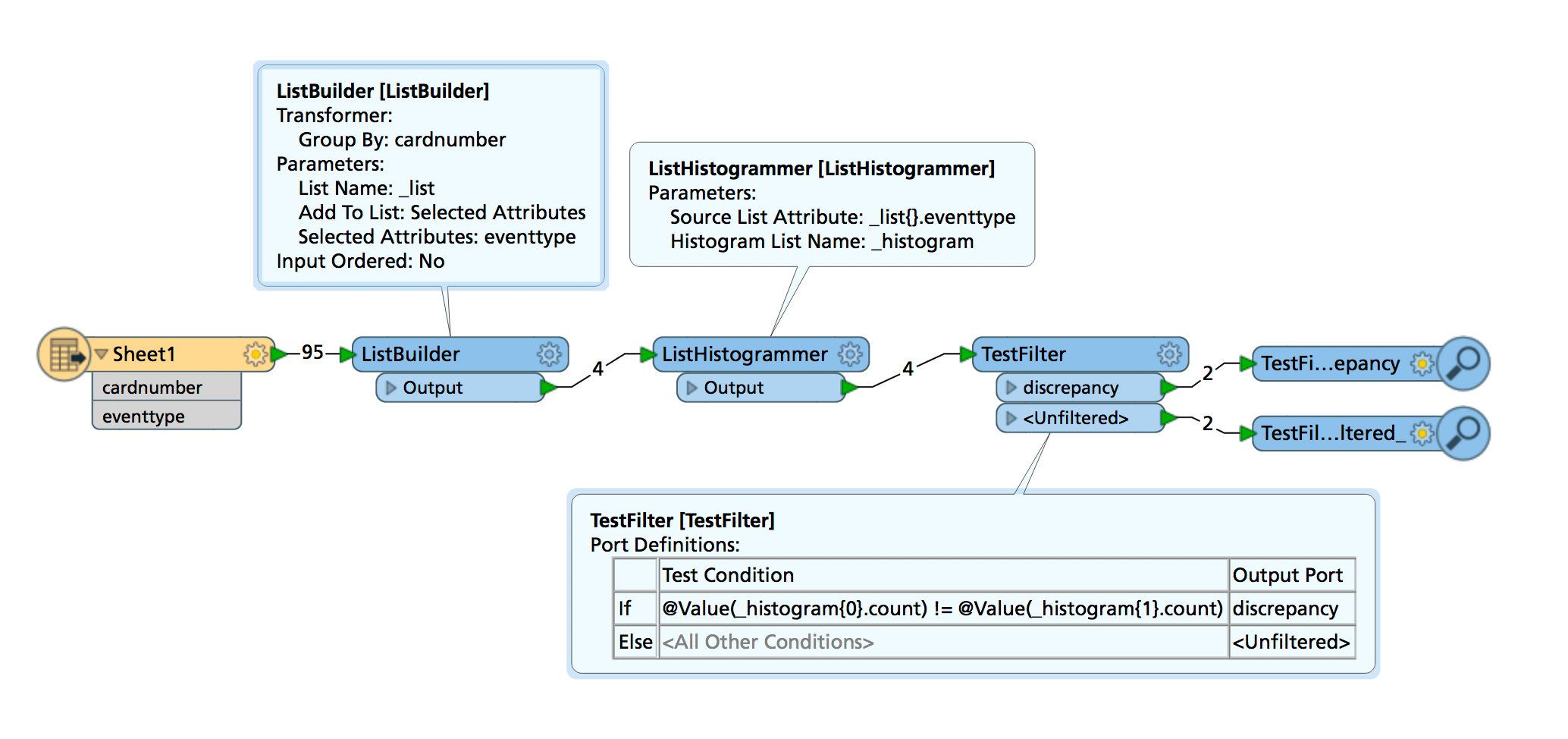Hi, I have a query please.
The scenario is this - employees working for a national company are based at different offices. Each employee has a card number, which is unique to them. Every time an employee uses their card to enter an office by swiping their card, it is registered...and likewise when they leave the office too. And so the table I have includes (for each employee) has a field for "Card Number" and also a field called "Event" which records whether an employee has "Swiped In" or "Swiped Out."
The question I have is this - I want to be able to compare, for each employee, the number of times they have "Swiped In" and "Swiped Out" You would expect if an employee has swiped in say 10 times, there would also be 10 occurrences of swiping out. However, a casual glance at the data does not always suggest this....I can see for example that sometimes employees have swiped in more times than they have swiped out.
Therefore, is there a good way in FME whereby I can report for each employee (using their unique Card Number) where there is a discrepancy between the number of times they have swiped in and swiped out ?
Any help appreciated, thanks













